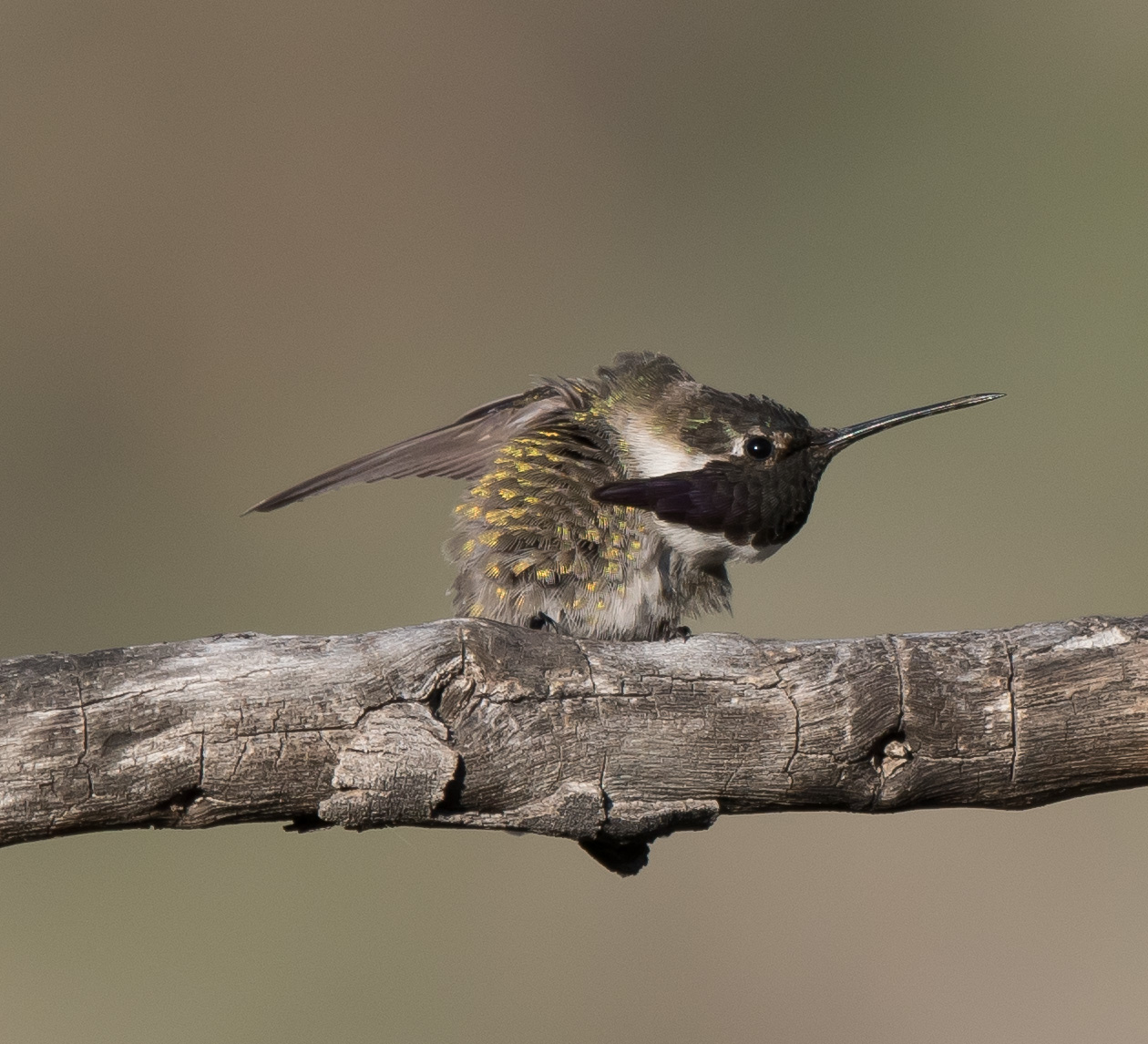Our second full day in Greenlee County was Saturday, May 13, and it was the Global Big Day. We wanted to try to get as many species of birds as possible to put Greenlee County on the map for birding, so we concentrated more on the southern section of the county and some of the riparian locations to try and accumulate the highest number of species as possible. We started out in the town of Duncan and ended the night in the Big Lue mountains north and east of Duncan. It was a wise decision as we ended up with 107 species for the day and we covered a variety of habitats, from riparian, to desert, to a pond and ending up in the mountains.
The town of Duncan is located along the Gila River and has a wonderful riparian area and a place designated as the 'Duncan Birding Trail'. This was our starting point on Saturday and it did not disappoint. We ended up with a whopping 66 species in this location alone! Finally got my best views to date of a Mississippi Kite.
Mississippi Kite
Mississippi Kite
Mississippi Kite
Rose-breasted Grosbeak - Uncommon but annual in Arizona
Summer Tanager
Blue Grosbeak
Cedar Waxwings with a Summer Tanager for extra measure
Barn Swallow
Common Black Hawk
Anna's Hummingbird - rare in Greenlee County
Gray Vireo - This was the first eBird report of this species in Greenlee County
For video and song of this Gray Vireo, please click on this LINK.
Now a bit of interesting information for those of you that are actually reading this post and it concerns the next 2 photos of these whiptail lizards. These 2 species of lizards are parthenogenetic which means they are asexual and are all females. They lay unfertilized eggs and all the offspring are actually clones of the parent. Now isn't that an interesting tidbit of information? Both of these species were new lifer reptiles for me as well.
Desert Grasslands Whiptail
Sonoran Spotted Whiptail
Sleepy Orange
Sonoran Gopher Snake - It was quite docile, so we enjoyed it until it finally crawled off the road and into the brush on the side.
The town of Duncan is located along the Gila River and has a wonderful riparian area and a place designated as the 'Duncan Birding Trail'. This was our starting point on Saturday and it did not disappoint. We ended up with a whopping 66 species in this location alone! Finally got my best views to date of a Mississippi Kite.
Mississippi Kite
Mississippi Kite
Mississippi Kite
Rose-breasted Grosbeak - Uncommon but annual in Arizona
Summer Tanager
Cedar Waxwings with a Summer Tanager for extra measure
Barn Swallow
Common Black Hawk
Thistle-down Velvet Ant - one of the most painful stings of the insect world
Antlion - with a quizzical look
Olive-sided Flycatcher
We finished the day at Coal Creek Campground in the Big Lue Mountains where we were able to detect a Mexican Whip-poor-will. Obviously this is a nocturnal bird and photos were not to be had, but I was at least able to capture its call on a video and it can be heard by clicking on this LINK.
Sunday was our day to return, but we made the most of the morning before our departure by visiting a spot in the town of Clifton and Lower Eagle Creek and finally the eastern access point to Gila Box Riparian National Conservation Area.
Gray Vireo - This was the first eBird report of this species in Greenlee County
For video and song of this Gray Vireo, please click on this LINK.
Now a bit of interesting information for those of you that are actually reading this post and it concerns the next 2 photos of these whiptail lizards. These 2 species of lizards are parthenogenetic which means they are asexual and are all females. They lay unfertilized eggs and all the offspring are actually clones of the parent. Now isn't that an interesting tidbit of information? Both of these species were new lifer reptiles for me as well.
Desert Grasslands Whiptail
Sonoran Spotted Whiptail
Sleepy Orange
Tiger Whiptail
Sonoran Gopher Snake
This trip to Greenlee County was a real eye-opener and I feel that I need to return to fully explore it some more in the future. I do have some ideas in mind that might enable others to take a peak at what this county has to offer, but timing will be crucial to get the most species of birds.















































